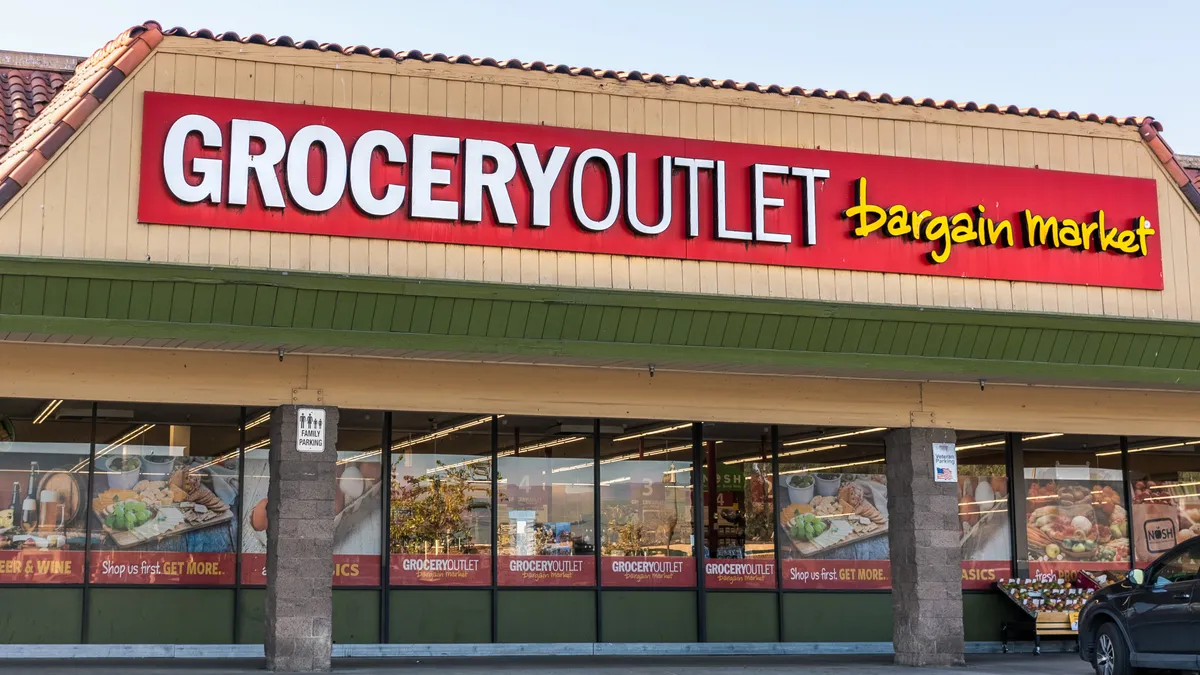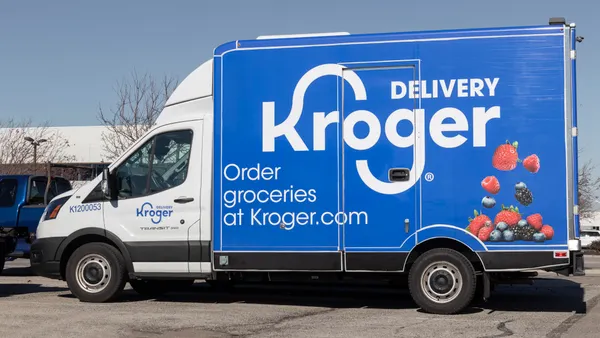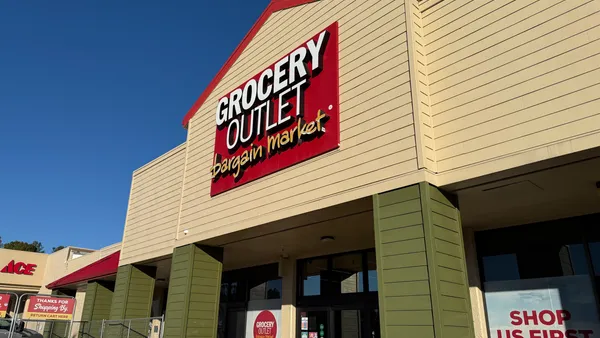Dive Brief:
- Jason Potter, the new president and CEO of Grocery Outlet, outlined to investors during the company’s first-quarter earnings call on Tuesday four strategic priorities “to unlock the tremendous opportunity” he sees in the discount grocer’s business.
- The priorities include improving new store performance, securing top talent, addressing execution gaps, and strengthening opportunistic buying while also becoming a leading selling organization, Potter said.
- Grocery Outlet announced the upcoming retirements of two executive vice presidents: Chief Operations Officer Ramesh Chikkala, who is leaving in June, and Chief Stores Officer Pamela Burke, who departs later this year. The discounter said it is commencing a search for a new store operations leader along with other key management roles.
Dive Insight:
Potter, who joined Grocery Outlet in February after nearly five years leading The Fresh Market, made his turnaround plan clear to investors who have watched the discounter struggle in recent months with C-suite turnover, ongoing systems disruptions and lackluster value messaging.
The focus, he noted, will be on further differentiating the company while also remaining efficient.
“While we make progress to improve our commercial execution with one foot on the gas, it’s important at this stage of this turnaround, we have one foot on the brake,” Potter said. “We’re being intentional about making meaningful progress on addressing the cost side of this business.”
During his first three months at the helm of Grocery Outlet, Potter said he has sought feedback from more than 50 independent operators who run the discounter’s stores, dozens of suppliers and many customers. The operators, he said, seek more support from the company to improve execution, while the customers asked “for more value with a more consistent experience that helps them complete their weekly shop,” Potter said.
Grocery Outlet is testing a new commercial execution playbook for its new stores to boost year-one sales. It’s also focused on clustering stores in new markets and adding locations to regions where its brand awareness is already high, Potter said.
Testing and learning are a key part of Potter’s strategy. Grocery Outlet has pilot programs planned around new sourcing strategies, labor tools and electricity use. It also plans to test a new store model with more uniform merchandising.
“[We’re] promoting a stronger mix of high-margin, value-driving opportunistic products and private label,” Potter said. “We’ve also begun to experiment with some new in-store communication tools to make our value messaging work harder. It’s important that we're consistently building trust with our guests.”
As part of its efforts to improve price, quality and service for its customers, Potter said Grocery Outlet has made changes to its quality standards for key produce items such as bananas and avocados to ensure they are ripe and ready to eat.
To boost its supply chain efficiencies, the company is consolidating its five distribution centers in the Pacific Northwest to one by the end of the month and later this year will begin operating a new distribution center in the East, Potter said.
Grocery Outlet has started the initial phase of its proprietary real-time order guide rollout, which it expects to complete by the end of the second quarter. Potter said new CIO Kumar Mishra has made “significant progress” on systems integration, which comes after a multi-year disruption stemming from a rough technology transition in mid-2023.
While Grocery Outlet’s Q1 results exceeded the company’s expectations, the discounter is adjusting its projections for the rest of the year due to macroeconomic trends and changes in the business, executives said on the call.
During Q1, Grocery Outlet posted net sales of just over $1.1 billion, up 8.5% year over year, and saw comparable-store sales increase 0.3%, with results impacted by the decrease in transaction size offsetting growth in the number of transactions and the timing shift of Easter compared to last year. Gross margin was up more than 30% — higher than the same time last year — but the company recorded operating and net losses of approximately $23 million as it faces costs linked to the restructuring plan it unveiled at the end of February, just a few weeks after Potter joined.
Grocery Outlet opened 11 stores and closed one in Q1, putting the company on track to achieve its annual target of 33 to 35 net new stores.
For fiscal 2025, the company retained most of its original projections for key financial metrics, such as store openings, net sales, gross margin, adjusted EBITDA and capital expenditures, but lowered comp-store sales guidance to 1% to 2%, from the original range of 2% to 3%.
“In the short time I've been here, it's clear to me that with the right focus and execution, this business can continue its history of leading growth and profitability,” Potter said. “We have a highly differentiated offering, one driven by a value-based treasure hunt in a convenient box operated by motivated and engaged independent operators.”











